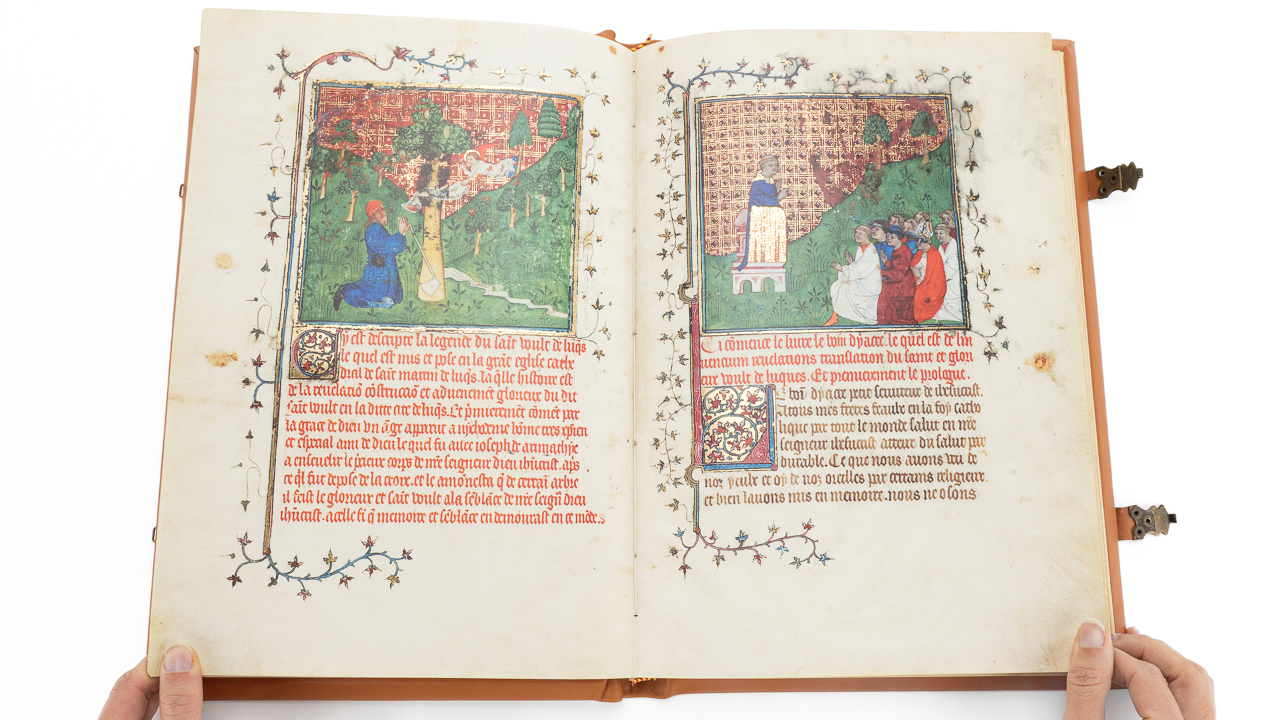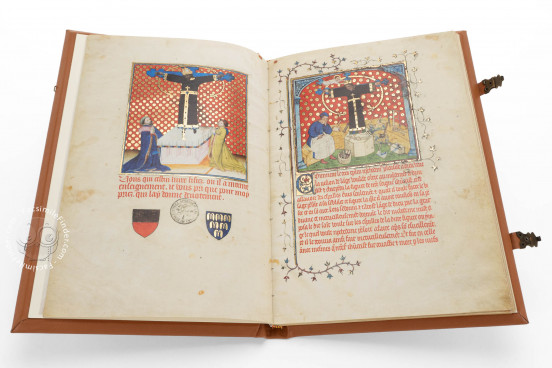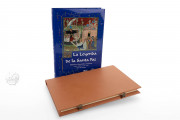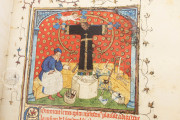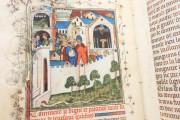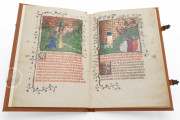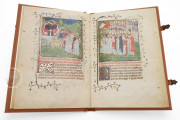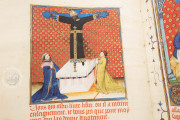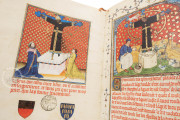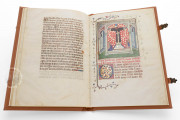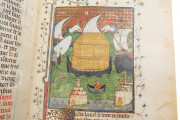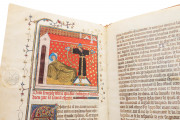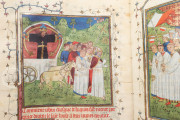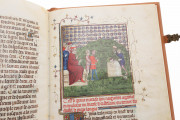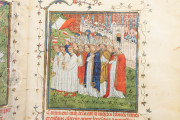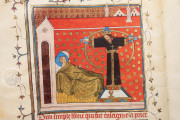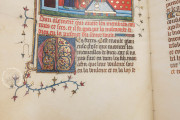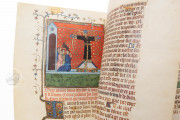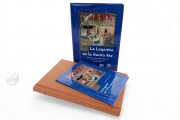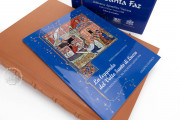The Legend of the Volto Santo is an illuminated manuscript of the Middle French translation of the story of the Volto Santo ("holy face") of Lucca, one of the most widely revered Christian relics of medieval Europe. The manuscript was made around 1400-1405, probably in Paris, for Dino and Jacques Rapondi. It boasts a frontispiece and twenty-six large miniatures detailing the object's creation and transport to Lucca and its associated miracles. The frontispiece is the work of the Master of the Coronation of the Virgin.
The Volto Santo is a life-size polychrome carved wooden crucifix housed in the cathedral of San Martino in Lucca. It dates from the late eighth century when the original Latin legend describing the discovery of the sculpture and its miraculous transfer to Lucca was written. Two sets of miracle stories set in Lucca were composed later.
A Painter for Princes
Trained in the Netherlands, the Master of the Coronation of the Virgin—also known as the Master of the Livre des femmes nobles et renommées—was active in France in the early years of the fifteenth century. Manuscripts he illuminated were acquired by the famous bibliophiles Philip the Bold (1342-1404), Duke of Burgundy, and John of France (1340-1416), Duke of Berry.
The master's painting in the Volto Santo codex (fol. iv verso) is characterized by graceful figures set against a background of red with gold balls, all rendered in brilliant, jewel-like colors. The narrative miniatures, by two other painters, feature solid figures, stylized landscape elements, and diapered (geometrically patterned) backgrounds.
The Face of a Miracle
The crucifix in Lucca derives its name from the legend of its creation by Nicodemus, a converted Pharisee reported in the Bible to have lowered the body of the dead Christ from the cross. He left the face uncarved, fell into a deep sleep, and found the face miraculously finished by angelic hands upon waking. This is depicted in the manuscript in a scene of the sleeping Nicodemus, his tools arrayed around him, the face delineated, and an angel placing a crown on the statue (fol. 1r).
A Myriad of Miracles
More than half of the manuscript's miniatures depict miracles associated with the sculpture after its arrival in Lucca, starting with the most famous. A poor man performs before the Volto Santo, playing a stringed instrument, and is rewarded by the statue, which kicks to him a silver slipper from its foot (fol. 16v). There follows a series of miracles, including one involving a golden table (fol. 24r), and two exorcisms (fols. 31r and 34r).
Tuscans in the North
Two brothers of the Rapondi banking family of Lucca, who served as advisers at the princely courts of France and Burgundy, commissioned the book. The brothers are depicted in the opening miniature kneeling before the Volto Santo (fol. iv verso). The coats of arms in the lower margin are those of the city of Lucca and the Rapondi family.
An Orderly Presentation
For the most part, each miniature appears at the top of a new page and is followed by a lengthy heading (or rubric) in red ink that both summarizes the following portion of text and serves as a caption for the image. The text was written by a single scribe in a handsome Gothic Textualis script.
To the Vatican Via Heidelberg
Some pages of the manuscript were scrambled early in its history. Sense order is: fols. iii-iv, 2, 1, 3, 8-9, 6-7, 4-5, 10-44. The manuscript is one of hundreds transferred from the Bibliotheca Palatina in Heidelberg via Maximilian I (1597-1651), Elector of Bavaria, to the Vatican at the behest of Pope Gregory XV (1564-1623) as booty from the Thirty Years War.
We have 1 facsimile edition of the manuscript "Legend of the Volto Santo": Leyenda de la Santa Faz facsimile edition, published by CM Editores, 2008
Request Info / Price
